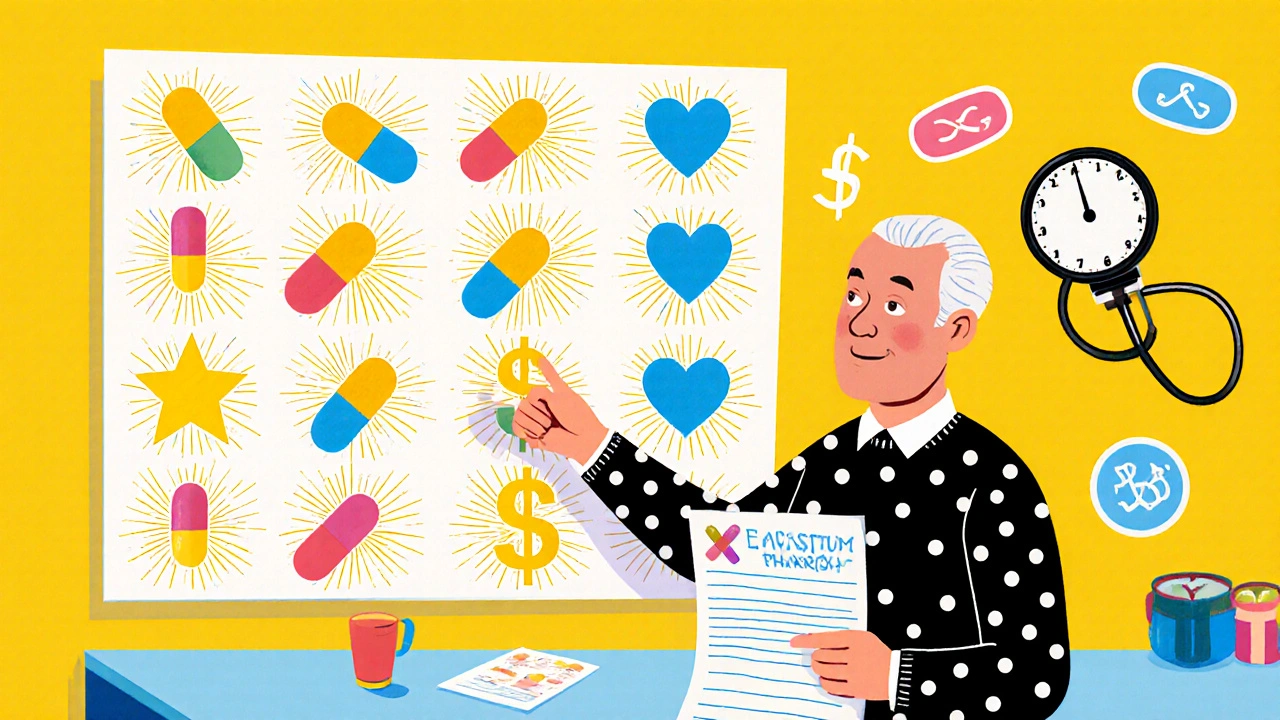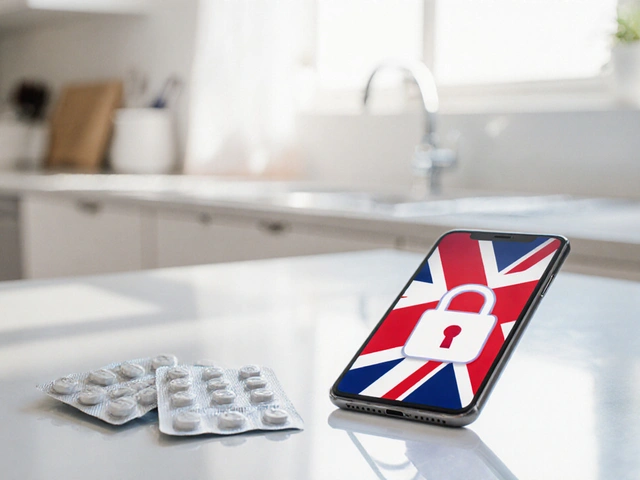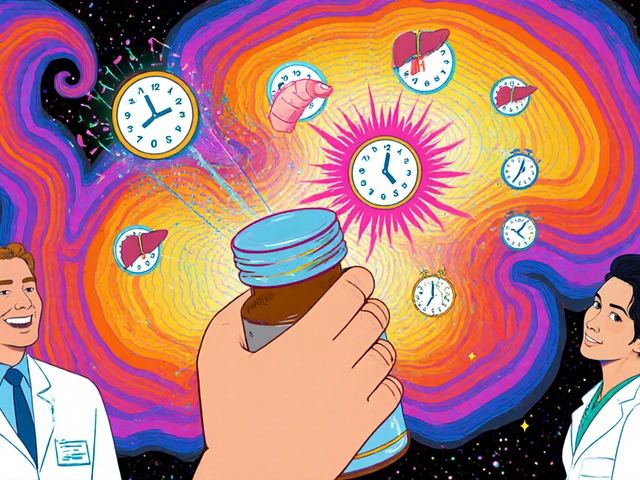Have you ever picked up your prescription and thought, "This isn’t the same pill I got last month"? Maybe it’s a different color, shape, or size. You’re not imagining it. And you’re not alone. Millions of people in the U.S. experience this every year - and most of them panic, wondering if something’s wrong. The truth? Generic drugs are just as safe and effective as their brand-name counterparts. The difference in appearance has nothing to do with quality, strength, or how well it works. It’s all about the law.
It’s Not a Mistake - It’s the Law
The reason generic pills look different isn’t because manufacturers are cutting corners. It’s because U.S. trademark law says they can’t look the same. The Food and Drug Administration (FDA) enforces this rule strictly. If a brand-name drug like Prozac is a blue capsule, no generic version can be made to look exactly like it. That’s not about safety - it’s about protecting the original company’s brand identity. This rule dates back to the Hatch-Waxman Act of 1984. That law created the modern pathway for generic drugs to enter the market. It allowed companies to copy proven medications without repeating expensive clinical trials. But in exchange, they had to make sure their versions didn’t confuse patients or look like someone else’s product. So, generic makers had to change the color, shape, or even the markings on the pill - anything to make it visually distinct.Same Active Ingredient, Different Extras
Here’s what stays the same: the active ingredient. If your brand-name pill contains 20 mg of fluoxetine, so does the generic. That’s the part that actually treats your condition. The FDA requires generics to prove they deliver the same amount of that ingredient into your bloodstream at the same rate as the brand. They must be bioequivalent - meaning absorption falls within 80% to 125% of the brand’s performance. That’s a wide enough range to account for normal manufacturing variation, and studies show it doesn’t affect outcomes. What changes? The inactive ingredients. These are the fillers, dyes, binders, and coatings that give the pill its shape, color, and texture. A brand-name drug might use a specific blue dye that’s trademarked. The generic version uses a different dye - maybe yellow or white - to avoid copying. Sometimes, the binder is lactose instead of cornstarch. These changes don’t affect how the medicine works. But they do change how it looks.Why Does This Even Matter?
You might think, "If it works the same, why does it matter what it looks like?" But for many people, appearance matters a lot. A 2021 study in JAMA Internal Medicine found that 14.2% of patients stop taking their medication after switching to a generic - not because it doesn’t work, but because they don’t recognize it. They worry it’s the wrong drug, a counterfeit, or something dangerous. One case from Brown University Health involved a 72-year-old man who stopped taking his blood pressure pill because the new generic was pink instead of white. Eleven days later, his blood pressure spiked to 198/112. He ended up in the ER. This isn’t rare. Community pharmacies report that appearance changes are the third most common cause of medication errors - right after similar-sounding drug names and unreadable handwriting. The UMass Memorial Health Center found that about 3% of all medication errors in pharmacies trace back to patients confusing pills because they looked different.
What Pharmacies Are Doing About It
Pharmacies know this is a problem. And they’re trying to fix it. Most major chains like CVS and Walgreens now have systems that flag when a patient gets a generic that looks different from their last refill. When that happens, the pharmacist is prompted to explain why - and reassure the patient. Many pharmacies now include a photo of the pill on the prescription label. Humana, a major insurer, runs a campaign that says: "The color or shape of your pill does not affect how it works." Their data shows that when patients get this message at pickup, they’re 22% less likely to quit taking their medicine. Some independent pharmacies even offer "medication synchronization" - where all your refills come from the same generic manufacturer. That way, your pills look the same every time. It’s not required, but it helps.Cost Savings Are Real - and Huge
The reason we even have generics is simple: money. Brand-name drugs can cost 80-85% more than their generic versions. In 2022, generic drugs saved the U.S. healthcare system $313 billion. Over the past decade, that total reached $2.2 trillion. That’s why 90% of prescriptions filled in the U.S. are for generics. That’s over 6 billion pills a year. Without generics, millions of people couldn’t afford their medications. But if patients stop taking them because they look different, those savings vanish - and so do health outcomes.
What About High-Risk Medications?
Some drugs, like warfarin (a blood thinner), levothyroxine (for thyroid), and phenytoin (for seizures), have a narrow therapeutic index. That means even small changes in how much gets into your blood can cause serious side effects. For these, the FDA has stricter rules - but even here, appearance differences are still required. Manufacturers of generics for these drugs have to prove they’re even more precisely matched in how they’re absorbed. But again, the color or shape can still change. The FDA’s position is clear: the active ingredient and absorption rate are what matter. The rest is just packaging.Is Anything Changing?
Yes. There’s growing pressure to fix this. In September 2023, the FDA released draft guidance suggesting generic makers should try to match the appearance of the brand-name drug when possible - not because it’s required, but because it helps patients stick to their meds. The 2023 Lower Drug Costs Now Act includes a requirement for the Department of Health and Human Services to create standards to reduce appearance-related errors by June 2025. Some generic manufacturers are already stepping up. Teva and Mylan now keep the same color and shape for common drugs like atorvastatin and lisinopril across all their generic versions. A 2023 study found that when patients get consistent-looking pills, adherence improves by 17.3%. The FDA’s 2023 Strategic Plan lists reducing patient confusion as one of its top five goals. Commissioner Robert Califf has openly questioned whether trademark rules are doing more harm than good.What You Should Do
If you get a pill that looks different:- Don’t panic. It’s probably still the right medicine.
- Check the label. The name of the drug and dosage should match what your doctor prescribed.
- Ask your pharmacist. They can show you the pill image, confirm it’s correct, and explain why it looks different.
- Don’t stop taking it unless your doctor says so.
Generic drugs work. They’re safe. And they save lives - and billions of dollars. The only thing that’s different is the look. And that’s by design.
Why do generic drugs look different if they’re the same as brand-name ones?
Generic drugs look different because U.S. trademark laws prevent them from copying the exact appearance of brand-name pills. This includes color, shape, size, and markings. While the active ingredient and effectiveness are identical, the inactive ingredients - like dyes and coatings - are changed to make the generic visually distinct. This rule exists to protect the original brand’s intellectual property, not because of any difference in safety or performance.
Are generic drugs less effective than brand-name drugs?
No. Generic drugs must meet the same strict standards as brand-name drugs to get FDA approval. They must deliver the same amount of active ingredient into the bloodstream at the same rate - within a 20% range that’s considered clinically insignificant. Studies, including a 2008 JAMA analysis of 38 trials, show no meaningful difference in effectiveness between generics and brand-name versions.
Can changing the color or shape of a pill affect how it works?
No. Changes in color, shape, or size are due to different inactive ingredients, which don’t impact how the medicine works. These ingredients only affect appearance, taste, or how quickly the pill dissolves - not the overall effectiveness. Even for high-risk drugs like warfarin or levothyroxine, the FDA requires tight control over absorption, not appearance.
Why do some people stop taking their generic medication?
Many people stop because they don’t recognize the pill. If their last refill was a white tablet and the new one is yellow, they may think it’s the wrong drug, a counterfeit, or less potent. A 2021 study found that 14.2% of patients discontinue chronic medications after switching to a generic - not due to side effects, but because of confusion over appearance. This can lead to dangerous health consequences, like uncontrolled blood pressure or seizures.
What can I do if my generic pill looks different?
First, check the label to confirm the drug name and dosage match your prescription. Then, ask your pharmacist. They can show you a photo of the pill, explain why it looks different, and confirm it’s correct. Most pharmacies now use "Generic Appearance Alerts" to trigger counseling when this happens. Don’t stop taking it unless your doctor advises you to.
Are there any exceptions where generic appearance matters more?
For drugs with a narrow therapeutic index - like warfarin, levothyroxine, or phenytoin - even small changes in absorption can matter. The FDA requires stricter bioequivalence testing for these, but the appearance rules still apply. Manufacturers must prove the generic performs the same as the brand, but the pill can still look different. That’s why consistency in appearance - even across different generic brands - helps patients stay on track.
Is the FDA planning to change these rules?
Yes. In 2023, the FDA issued draft guidance encouraging generic manufacturers to match the appearance of brand-name drugs when possible. The 2023 Lower Drug Costs Now Act also requires the government to develop standards to reduce appearance-related medication errors by June 2025. Some manufacturers are already making changes voluntarily, keeping consistent colors for common drugs like atorvastatin to improve adherence.





Sammy Williams
November 21, 2025 AT 02:30Been there. Got my blood pressure med switched to a tiny yellow pill last month and nearly threw it out. Thought I got someone else’s stuff. Turned out it was the same exact drug, just generic. Pharmacist showed me the pic on the label and I felt like an idiot. But hey, at least I didn’t stop taking it. Thanks for the post - this needs to be on every prescription slip.
Erika Sta. Maria
November 21, 2025 AT 15:06OMG I KNEW IT!! I TOLD MY PHARMACIST THAT THIS WAS A GOVERNMENT PLOT TO MAKE US CONFUSED!! THE BIG PHARMA COMPANIES ARE HIDING THE TRUTH!! WHY DO THEY MAKE IT LOOK DIFFERENT?? IT’S OBVIOUS THEY’RE REPLACING THE REAL DRUG WITH FAKE STUFF!! I’M SURE THE FDA IS IN ON IT!! THEY WANT US TO DIE SLOWLY SO THEY CAN SELL MORE BRAND NAME!!
Nikhil Purohit
November 23, 2025 AT 08:50Hey, this is actually super helpful. I’m from India and we don’t have brand-name vs generic confusion like this - most meds here are generic by default. But I’ve seen friends in the US freak out over pill color. This explains why. The real issue isn’t science, it’s perception. Maybe if pills had QR codes linking to info, people wouldn’t panic. Just a thought.
Debanjan Banerjee
November 23, 2025 AT 09:51Let’s be clear: the FDA’s current policy is archaic and dangerous. The Hatch-Waxman Act was written in 1984 - before smartphones, before digital databases, before patients routinely Google their pills. Requiring generic manufacturers to alter appearance for trademark reasons is a legal relic that endangers public health. Bioequivalence is proven. Appearance should be standardized, not randomized. This isn’t about branding - it’s about preventing preventable hospitalizations. The 2023 draft guidance is a start, but it needs teeth.
Steve Harris
November 23, 2025 AT 13:41I appreciate how thorough this is. I work in a clinic and see this exact issue every week - especially with elderly patients. One woman stopped her statin because the generic was green instead of blue. She had a mild heart episode three weeks later. We now print pill images on all generic prescriptions. It’s a small change, but it reduces anxiety and improves adherence. The system’s broken, but little fixes help.
Michael Marrale
November 24, 2025 AT 06:04Wait… so you’re telling me the government doesn’t want us to know what’s REALLY in these pills? And they’re forcing pharmacies to switch them so we don’t notice? What if the color change hides a secret ingredient? What if they’re putting fluoride in the fillers? Or tracking chips? I’ve been taking my generic antidepressant for 5 years… and now I’m wondering… did they swap it out for something else? I need to test this pill. I’m getting a lab kit.